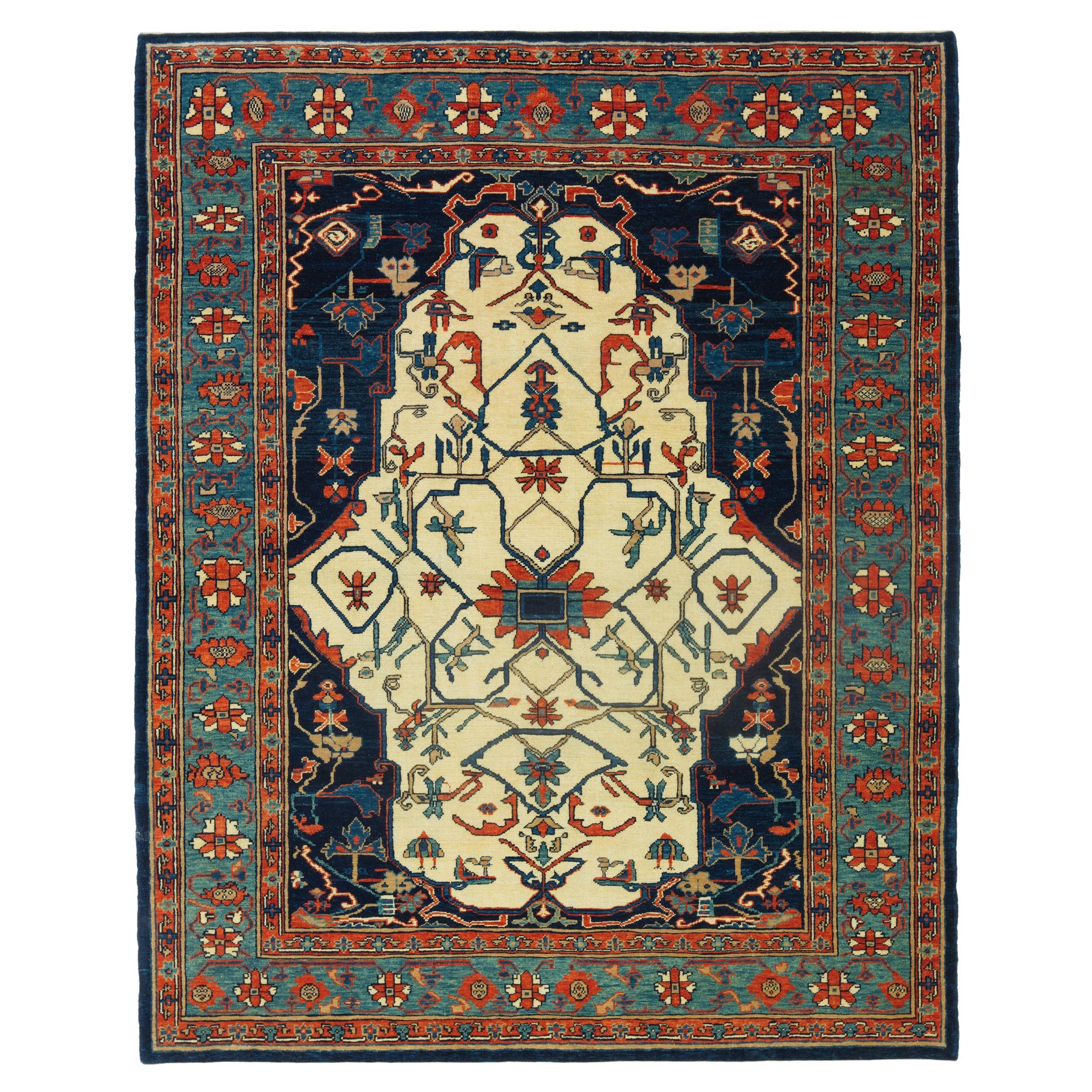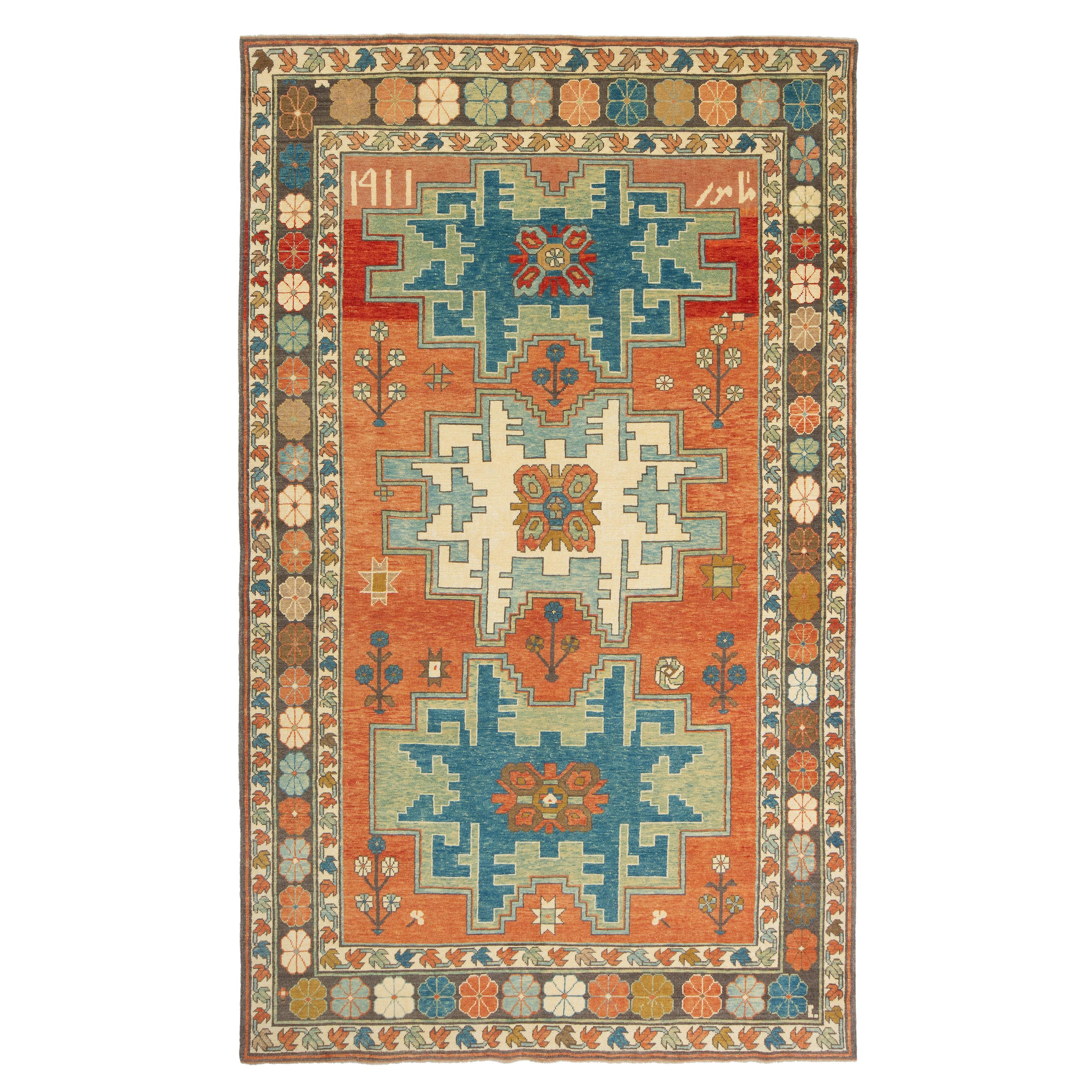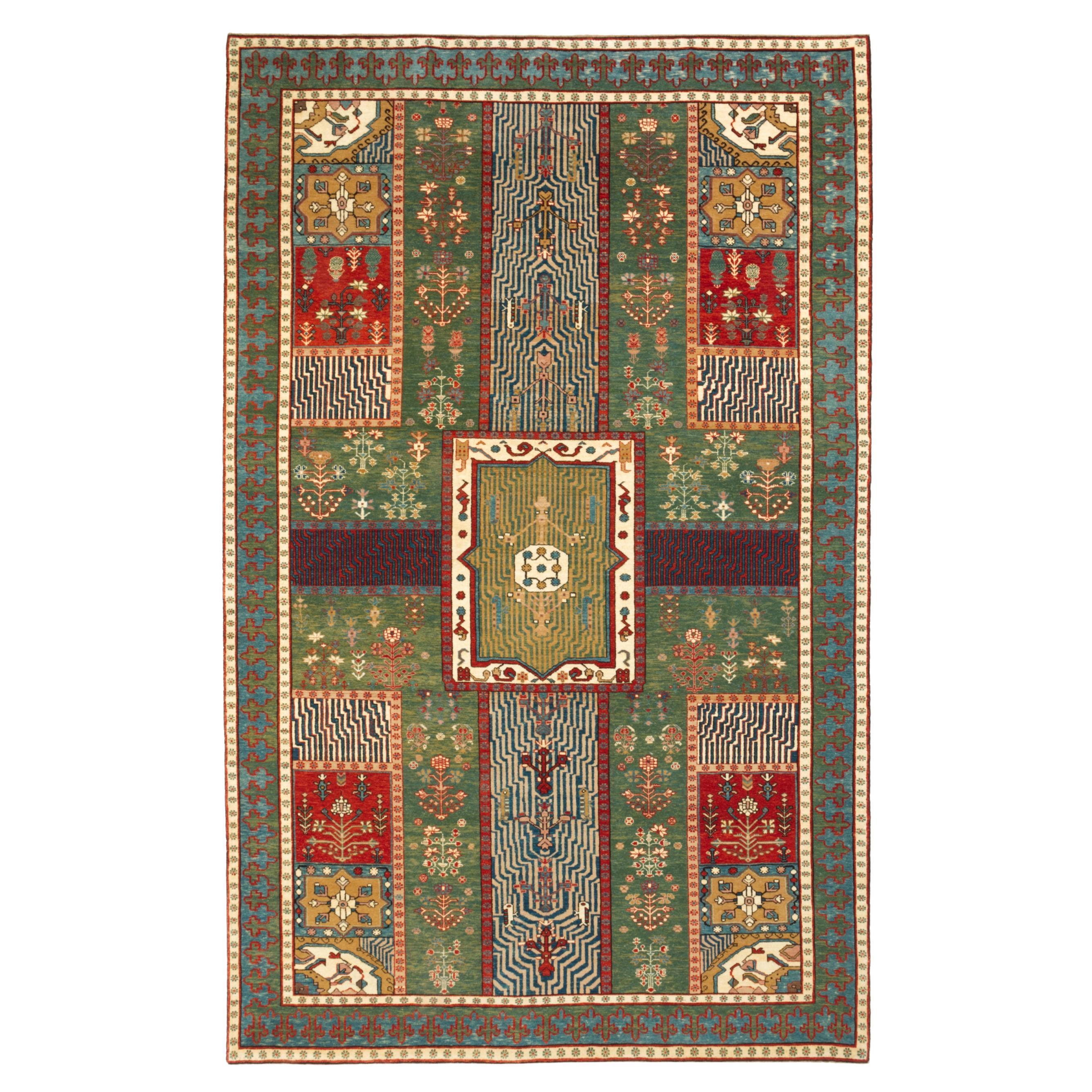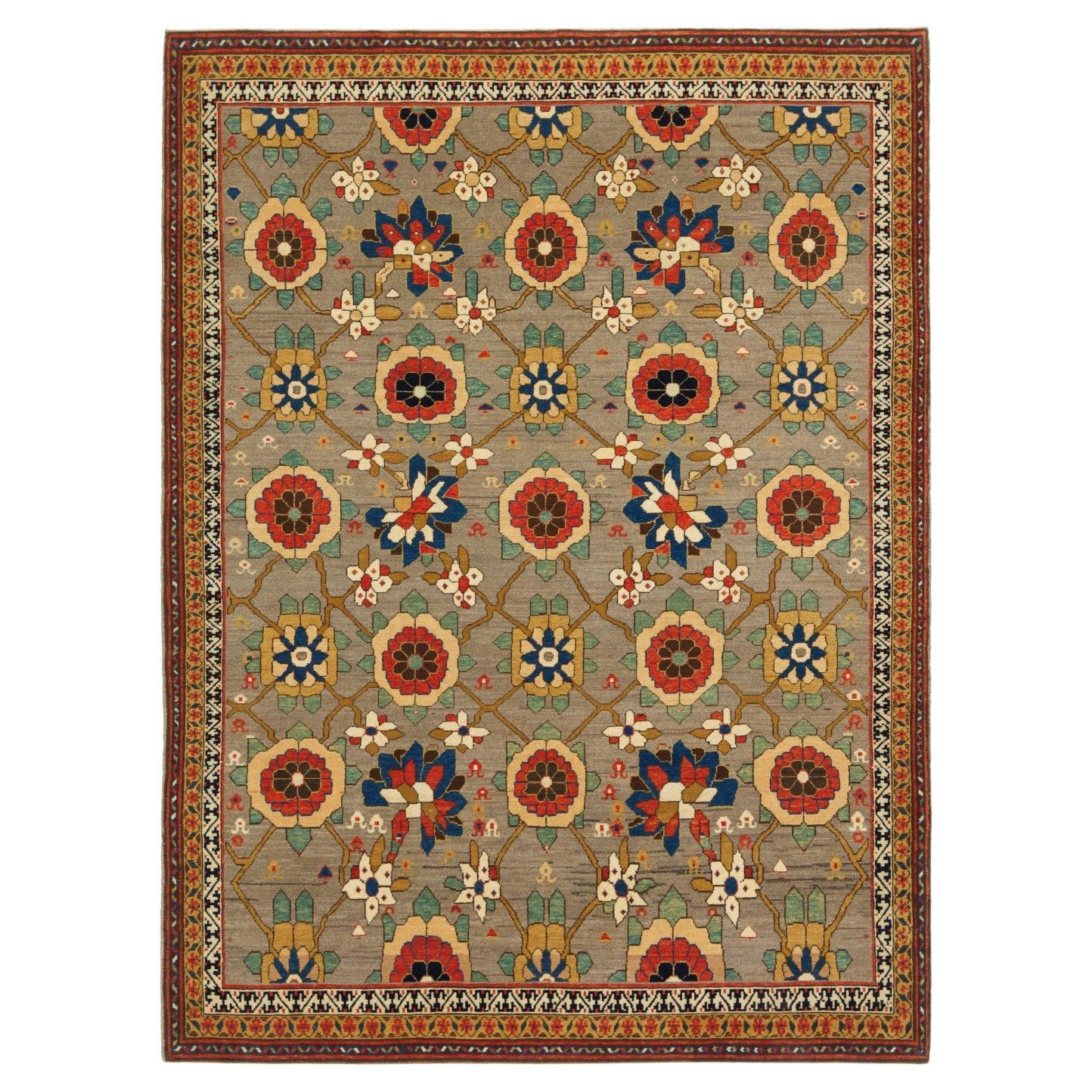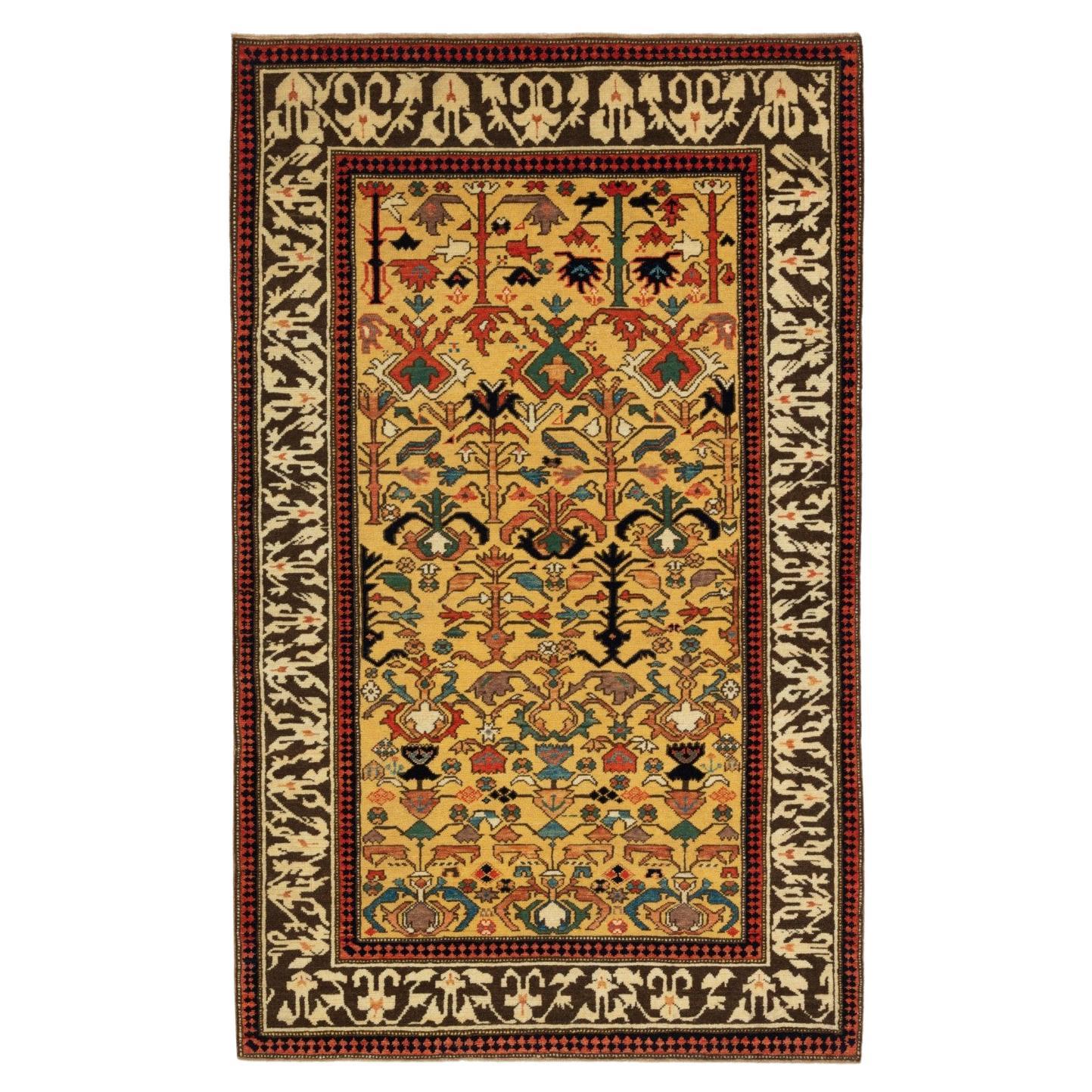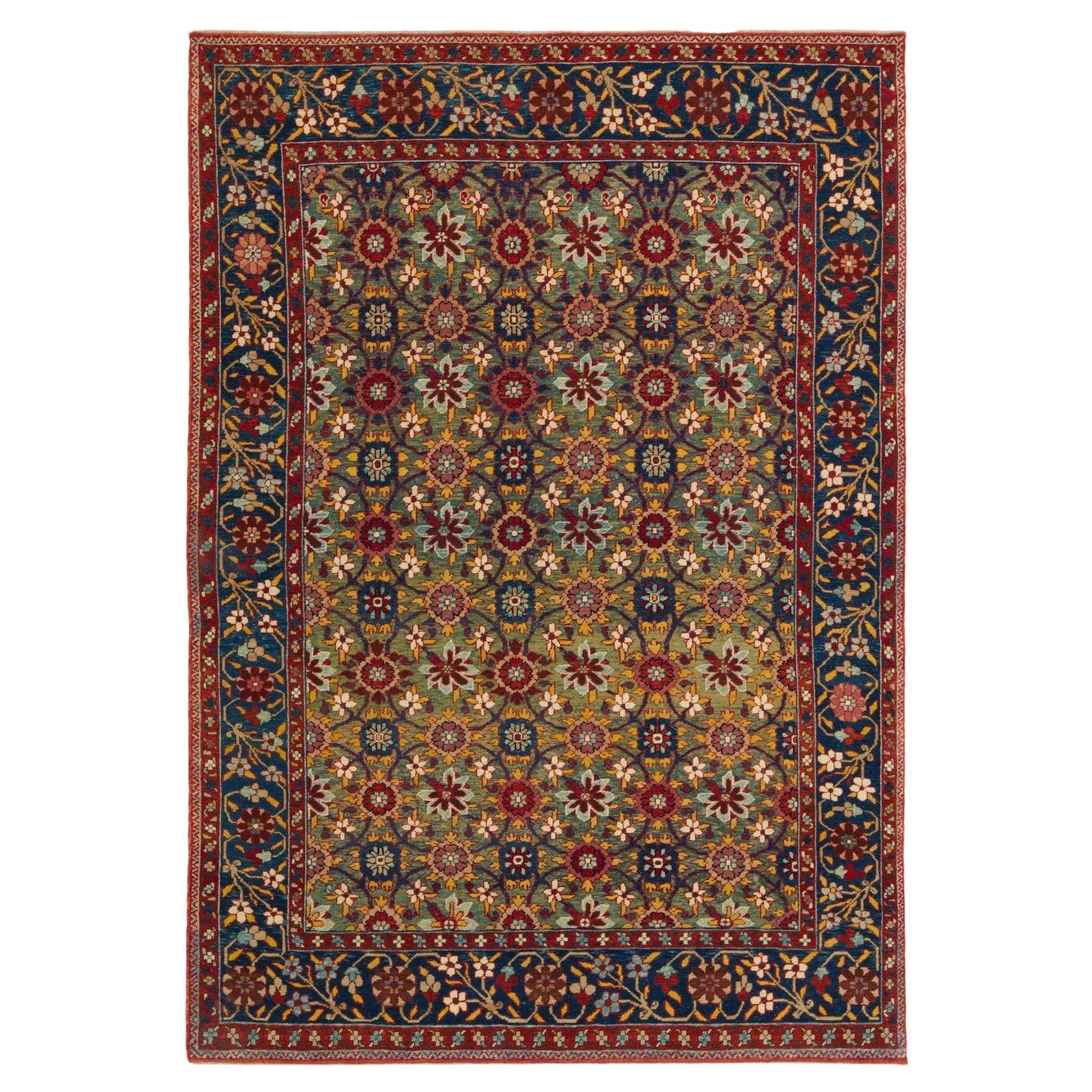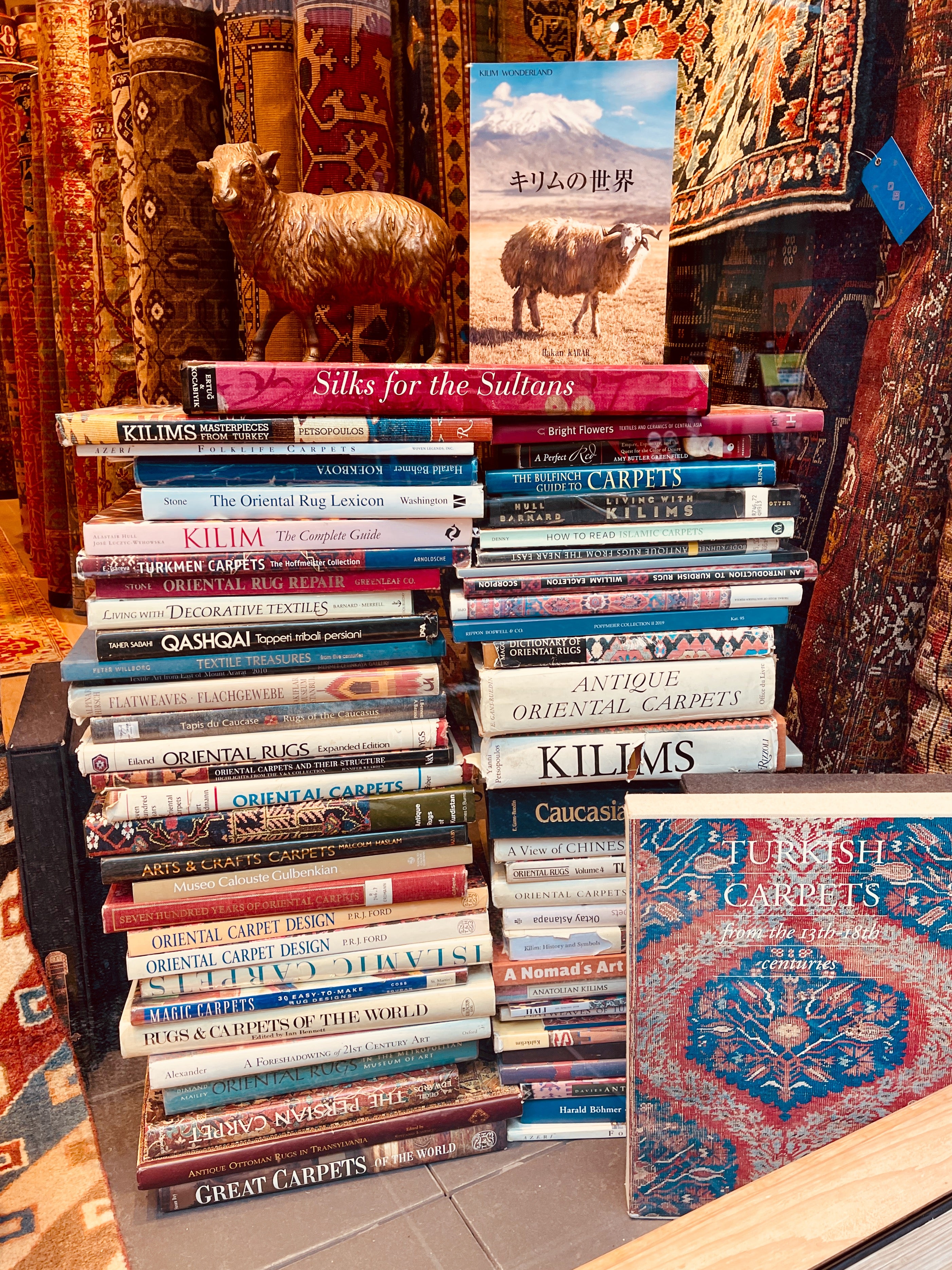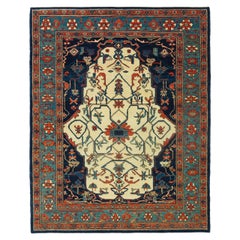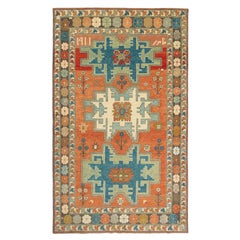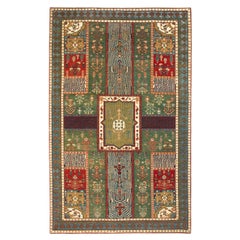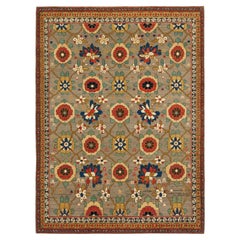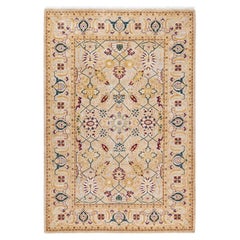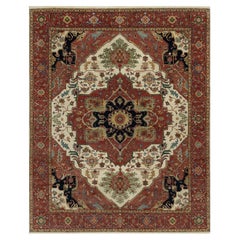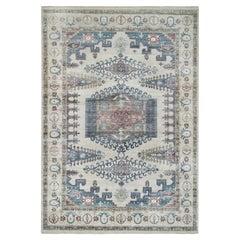Items Similar to Ararat Rugs Bid Majnum on White Field Rug, 17th Century Revival, Natural Dyed
Video Loading
Want more images or videos?
Request additional images or videos from the seller
1 of 12
Ararat Rugs Bid Majnum on White Field Rug, 17th Century Revival, Natural Dyed
$15,200
£11,539.58
€13,198.82
CA$21,236.60
A$23,619.74
CHF 12,333.49
MX$287,427.11
NOK 157,517.54
SEK 147,723.66
DKK 98,507.84
Shipping
Retrieving quote...The 1stDibs Promise:
Authenticity Guarantee,
Money-Back Guarantee,
24-Hour Cancellation
About the Item
The source of the rug comes from the book Antique Rugs of Kurdistan A Historical Legacy of Woven Art, James D. Burns, 2002 nr.45. This is a popular design employed by the Kurds, called bid majnum (or Bid Majnun, weeping willow) 17th-century rug from Sa’uj Bulagh, Eastern Kurdistan area. Four different types of trees -cypress, willow, cherry, and plane- can be depicted in these carpets, and the pattern is found on other Persian carpets from the 17th century to the present day. In addition to the weeping willow itself, there are two principal types of trees in this version of the bid majnum pattern: the plane tree with branches and tripartite leaves, and the cherry with white flowers (sakura) in bloom. The plane and cherry are often found in the field and borders of Sa’uj Bulagh rugs. The inner guard has the mountain peak pattern and this rug has many diverse colored floral figures on a white ground. The design of this rug is interpreted by our designers and vivid colors are chosen for this rug.
Color summary: 9 colors in total, most used 4 colors are;
Natural wool color 320 (Specially Washed)
Opal 533 (Henna – Indigo)
Dark Salmon 310 (Madders Root – Walnut Hulls)
Cadet blue 26 (Spurge – Indigo)
Group: Northwest Persia Rugs Family
Area: Bidjar
Material of Pile: Natural Dyed Hand-spun Wool
Material Warp / Weft: Wool on Wool
Structure: Symmetrical knot
Knots Density: 45x39
Production Place: Southeastern Anatolia – Diyarbakir - Lice
Stock Location: Tokyo
Size (EU): 350 x 231cm
Size (US): 11'5" x 7'6"
Area (EU): 8.1m²
Area (US): 87ft².
- Creator:Ararat Rugs (Manufacturer)
- Dimensions:Width: 90.95 in (231 cm)Length: 137.8 in (350 cm)
- Style:Revival (In the Style Of)
- Materials and Techniques:
- Place of Origin:
- Period:
- Date of Manufacture:2020
- Production Type:New & Custom(One of a Kind)
- Estimated Production Time:Available Now
- Condition:
- Seller Location:Tokyo, JP
- Reference Number:1stDibs: LU8206232756132
ARARAT RUGS
We know and believe that the geography we come from, our past, and our lifestyle are the most important bond between us to carry the oriental carpet art and culture to the next generations along with our core values in our ongoing growth journey.
We are aware that the way to achieve this goal and carry this priceless art and culture to the future depends on a lot of work with all our people every day while adhering to our core values.
For us, art is meaningful in the sense that it brings together various cultures around the world. It is an honor for us that oriental carpet art and culture have been instrumental in this for centuries and that we are a part of this business.
We are tirelessly keeping an eye on auction house information around the world about carpets. New York's Metropolitan, London's Victoria & Albert Museums, and other famous art museums, as well as small specialized museums that house private collections, and books about oriental carpets to collect information on outstanding carpet designs and patterns from around the world. It's our Self-improving and Self-developing culture.
As Turkish Culture of Hospitality, the Kurdish Culture of Generosity, and as Japanese Culture of Business Punctuality; are the most important values that this multicultural background has taught and bequeathed to us. It is essential and valuable for us that you feel this feeling not only by looking at our oriental carpets but from the moment you contact us.
About the Seller
5.0
Platinum Seller
Premium sellers with a 4.7+ rating and 24-hour response times
Established in 1970
1stDibs seller since 2023
55 sales on 1stDibs
Typical response time: 3 hours
- ShippingRetrieving quote...Shipping from: Tokyo, Japan
- Return Policy
Authenticity Guarantee
In the unlikely event there’s an issue with an item’s authenticity, contact us within 1 year for a full refund. DetailsMoney-Back Guarantee
If your item is not as described, is damaged in transit, or does not arrive, contact us within 7 days for a full refund. Details24-Hour Cancellation
You have a 24-hour grace period in which to reconsider your purchase, with no questions asked.Vetted Professional Sellers
Our world-class sellers must adhere to strict standards for service and quality, maintaining the integrity of our listings.Price-Match Guarantee
If you find that a seller listed the same item for a lower price elsewhere, we’ll match it.Trusted Global Delivery
Our best-in-class carrier network provides specialized shipping options worldwide, including custom delivery.More From This Seller
View AllArarat Rugs Heriz White Ground Rug - 19th C. Persian Revival Carpet Natural Dyed
By Ararat Rugs
Located in Tokyo, JP
This is a white ground rug designed in the 19th century, from the Heriz region, Northwest Persia area. Heriz ( Heris ) is a special Turkish knot weaving area of Persia, including man...
Category
21st Century and Contemporary Turkish Revival Persian Rugs
Materials
Wool, Natural Fiber, Organic Material
Ararat Rugs Lesghi Star Saliani Rug, Caucasian Revival Carpet, Natural Dyed
By Ararat Rugs
Located in Tokyo, JP
The source of the rug comes from the book Tapis du Caucase – Rugs of the Caucasus, Ian Bennett & Aziz Bassoul, The Nicholas Sursock Museum, Beirut, Lebanon 2003, nr.45 and Oriental R...
Category
21st Century and Contemporary Turkish Revival Caucasian Rugs
Materials
Wool, Natural Fiber, Organic Material
Ararat Rugs Garden Rug, 18th Century Persian Revival Carpet, Natural Dyed
By Ararat Rugs
Located in Tokyo, JP
The source of the rug comes from the book Islamic Carpets, Joseph V. McMullan, Near Eastern Art Research Center Inc., New York 1965 nr.28. This Persian Garden design rug belongs to t...
Category
21st Century and Contemporary Turkish Revival Persian Rugs
Materials
Wool, Natural Fiber, Organic Material
Ararat Rugs Mina Khani Rug, 19th Century Persian Revival Carpet, Natural Dyed
By Ararat Rugs
Located in Tokyo, JP
The source of the rug comes from the book Antique Rugs of Kurdistan A Historical Legacy of Woven Art, James D. Burns, 2002 nr.4. This was an exclusive example of a Mina Khani lattice...
Category
21st Century and Contemporary Turkish Oushak Persian Rugs
Materials
Wool, Natural Fiber, Organic Material
Ararat Rugs Kuba Rug with Palmettes Caucasian 19th C. Revival Rug, Natural Dyed
By Ararat Rugs
Located in Tokyo, JP
The source of the rug comes from the book Orient Star – A Carpet Collection, E. Heinrich Kirchheim, Hali Publications Ltd, 1993 nr.27. This is an ascending palmettes and flowers desi...
Category
21st Century and Contemporary Turkish Revival Caucasian Rugs
Materials
Wool, Natural Fiber, Organic Material
Ararat Rugs Mina Khani Rug, 19th Century Persian Revival Carpet, Natural Dyed
By Ararat Rugs
Located in Tokyo, JP
The source of the rug comes from the book Antique Rugs of Kurdistan A Historical Legacy of Woven Art, James D. Burns, 2002 nr.2. This was an exclusive example of a Mina Khani lattice design mid-19th century rug from Koliya'i, Southern Kurdistan area. The mina khani is composed of a series of rows of aster flowers surrounded by circular tendrils, vines, and other flowers; it's used in many areas of southern and eastern Kurdistan and is among the most popular of all Kurdish patterns. The lattice appears to continue into infinity - as though we can see the section that is framed by the border. The design of the rug is interpreted by our designers, and vivid colors are chosen for this rug.
Color summary: 11 colors in total, most used 4 colors are;
Imperial Red 415 (Madder Root)
Charleston Green...
Category
21st Century and Contemporary Turkish Revival Persian Rugs
Materials
Wool, Natural Fiber, Organic Material
You May Also Like
One of Kind Hand Knotted Traditional Oriental Mogul Ivory Area Rug
Located in Norwalk, CT
With understated palettes and allover designs, the rugs in the Mogul Collection will bring timeless sophistication to any room. Influenced by a spectrum of Turkish, Indian, and Persi...
Category
21st Century and Contemporary Pakistani Central Asian Rugs
Materials
Wool
$417 Sale Price
20% Off
Persian Kurdish Decorative Hand Knotted Rug in Ivory and Beige Color
By Nasiri
Located in New York, NY
This Persian tribal hand knotted rug is crafted with the finest hand-carded, hand-spun wool, and is made with all natural dyes. It resembles the antique original pieces designed by t...
Category
2010s Persian More Carpets
Materials
Wool
White Antiqued Fine Heriz Re-Creation Hand Knotted Pure Wool Rug 8'2" x 10'2"
Located in Carlstadt, NJ
This fabulous Hand-Knotted carpet has been created and designed for extra strength and durability. This rug has been handcrafted for weeks in the traditional method that is used to m...
Category
2010s Indian Medieval Persian Rugs
Materials
Wool
$4,359 Sale Price
20% Off
9'10"x13'10" Ivory, Reimagined Persian Viss Design, Pure Wool Hand Knotted Rug
Located in Carlstadt, NJ
Ivory with Soft Tones, Reimagined Persian Viss Design, Plush and Lush Soft Pile, Pure Wool Hand Knotted, Oriental Rug
Primary materials: Wool
Latex: No Pile
height: 0.25 Inches
Styl...
Category
2010s Indian Medieval Persian Rugs
Materials
Wool
$3,829 Sale Price
20% Off
White Dove Karajeh Design Hand Knotted Soft Wool Oriental Rug 8'3" x 10'1"
Located in Carlstadt, NJ
This fabulous Hand-Knotted carpet has been created and designed for extra strength and durability. This rug has been handcrafted for weeks in the traditional method that is used to m...
Category
2010s Indian Tribal Persian Rugs
Materials
Wool
$3,390 Sale Price
20% Off
9'1"x11'9" Linen White Aryana Grade Heriz All Over Design Hand Knotted Wool Rug
Located in Carlstadt, NJ
Linen White, Aryana Collection, Peshawar with Heriz All Over Design, High Mountain Wool, Densely Woven, Hand Knotted, Vegetable Dyes, Oriental Rug
Primary materials: Wool
Latex: No P...
Category
2010s Afghan Oushak More Carpets
Materials
Wool
$4,290 Sale Price
25% Off
More Ways To Browse
Blue Willow Pattern
Cypress Root
Bleached Teak Furniture
Blue Glass Ring
Box Sofas
Cream Side Tables
Ds Sofa
Fauteuil Antique
French Art 1800
Glass Top Table With Sculpture
Italian Chairs Cane
Oval Silver Bowl
Pair D End Tables
Spanish Leather Armchair
Tilt Back Chair
Vintage Kilim Fabric
Wall Mount Ceramic Sculpture
White Vintage Rattan
